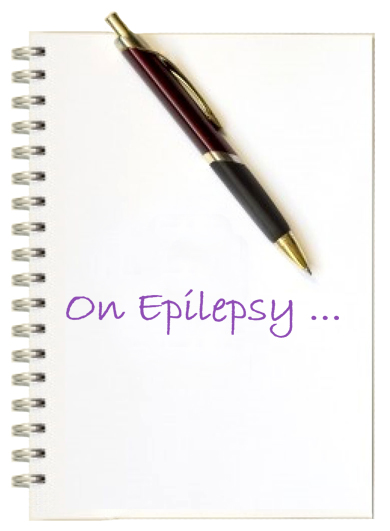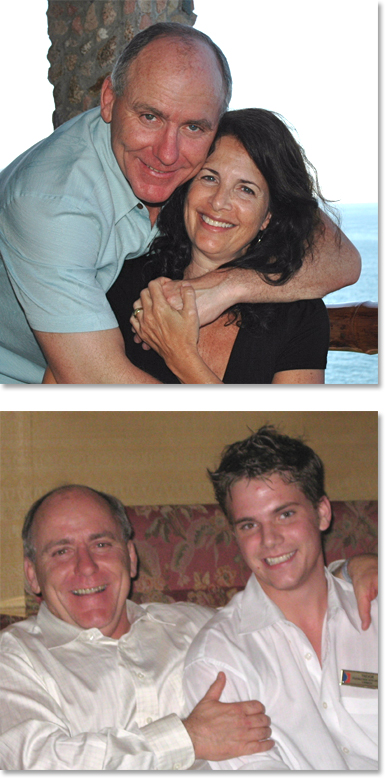
     
| |


|
 |


Welcome to "On Epilepsy," a new blog where you can find the latest news about epilepsy, the upcoming Toronto conference examining the Andrews-Reiter treatment, as well as in-depth info and discussion of the treatment itself.
This will be a group space with many contributors, including John Park, the director of the Toronto conference; Ellen Novack, his wife and co-director of the conference; Joshua
Kors, an investigative reporter with epilepsy who will be speaking at the conference; families affected by epilepsy; and many others.
We encourage submissions from families, patients and medical professionals
with their thoughts about the A-R treatment and medicine's ever-evolving approach to this neurological disorder.
To submit some of your thoughts, we encourage you to contact us here. And check back frequently for the growing discussion of personal stories and medical reflections.
|
 |



|
Andrews-Reiter Relaxation Tape 
Now Available as a Free Download
 Joshua Kors Joshua Kors
I came to the Andrews-Reiter epilepsy clinic in the summer of 1998. I left soon thereafter with the medical information I needed to halt my seizures. I also carried away a cassette tape: the Andrews-Reiter Relaxation Tape.
A central feature of the Andrews-Reiter approach is developing the skill to deflate moments of high stress, when epileptics experience a surge of cerebral electricity, which often leads to seizures. I was skeptical at first that anyone could learn to deflate those electrical surges. But with the help of counseling, proper breathing techniques and newly acquired relaxation skills, I did it. And my seizures stopped.
Dr. Andrews provides patients with a relaxation tape, so they can hone their breathing and relaxation skills after leaving the clinic. That tape became one of my most cherished possessions. In the first few years after my treatment, at college, I would take some down time in the middle of the day: laying in my bed, closing my eyes, allowing my tension to deflate as the tape played. Years later I continued to use the tape at bedtime, as a transition between the bustle of life and the stillness of sleep.
At our recent epilepsy conference in Toronto many Andrews-Reiter patients shared stories of the important role the tape played
in their getting well. We all agreed that to make the Andrews-Reiter approach accessible to others, the A-R relaxation tape needed to be available as well.
Now it is. I have digitized the tape, and both sides are available as a free download. Simply right-click on the large, purple buttons
here and select "Save Link As..." to download the tape.
On Side 1, a calming voice guides you down a forest path, accompanied by the soothing sounds of a gentle creek. Side 2 takes you to a beautiful beach, with the soft sounds of tweeting birds and the rhythmic flow of the tides.
I hope the tape proves as helpful a tool for you as it has for me and so many other Andrews-Reiter patients.
|
 |

|
Why Are We Sponsoring This Conference? 
 John Park & Ellen Novack John Park & Ellen Novack
We are sponsoring this conference in the hope that this treatment, the Andrews-Reiter approach, will reach other patients and parents, so they will not have to go through what we experienced for the first 13 years of our son’s epilepsy.
Life had been good to us: three great kids, beginning a new business and good health. We seemed to be living a charmed life. This all changed with our son Trevor’s first seizure at the age of 13, when he was in the car on the way to watch his beloved Toronto Maple Leafs play hockey.
Soon our interactions with the world of neurologists and medication began. Initially we were assured it was probably something Trevor would grow out of, and in fact there were good periods where he would go several months without a seizure, and everyone’s nerves would calm. Then more seizures would hit, sometimes coming in clusters.
We ran through the gamut of pediatric and adult neurologists as Trevor got older. The doctors ranged from incredibly caring and helpful to arrogant, aloof and, worse yet, indifferent to our son’s condition.
Unhappy with the options in Canada, we travelled to leading centers in Boston and New York. It was disappointing that there was little difference between the two systems when it came to treating epilepsy. Basically: Try drugs, first individually, then in combination. If that doesn’t work, increase the dosage. And if that doesn’t work, well, maybe you would be one of the lucky ones to qualify for brain surgery.
By this point we were fed up that only drugs and surgery were the standard approach to treat this condition. Luckily during our research we stumbled upon an article by Joshua Kors called "The Talking Treatment." The article, written for his master's thesis at the Columbia School of Journalism, outlined his personal experience as a teenager being treated at the Andrews-Reiter Epilepsy Research Center in Santa Rosa, California.
As we were scheduled to be in New York, we emailed Joshua, and he kindly consented to meet us for lunch to discuss his experience with the A-R program.
Our lunch turned into a three-hour conversation, and Joshua more than convinced us that this was worth a shot, as it had helped him tremendously. Three weeks later we were in Santa Rosa.
Dr. Donna Andrew's program had an immediate, positive impact on Trevor.
She taught him to become aware of the factors that triggered his seizures and showed him how he could abort seizures before they began. Donna also treated us for our fear--fear every parent of an epileptic understands.
Over the next few month, as Trevor worked through the program and Andrews' workbook, we watched as his frustration and anger dissipated, and his outgoing, friendly personality returned.
His drug regiment was gradually reduced under medical supervision. Now he no longer needed to sleep 16 hours a day, as he did with the heavy dose of medication. His brain has started to emerge out from under that drug stupor.
Our resolve to host this conference has only been reinforced by the wonderful testimonials we have received from patients of Dr. Andrews and Dr. Reiter. Their stories, like Trevor's, are remarkable.
|
 |
An Amazing Change 
 Candace Bergquist Candace Bergquist
My daughter Alicia began having seizures in the womb. I was on bed rest for five months, and while I gave birth to her with no complications, the second day of her life she stopped breathing. A nurse rushed in and was able to revive her.
Her breathing problems continued. Alicia spent two weeks in the neonatal intensive care unit and was administered all manner of tests. It wasn't clear what made her repeatedly stop breathing. Finally, when she had not stopped breathing for two days, the doctor assured me that all was well, that we didn't have anything to worry about. I was hopeful but skeptical as well. My daughter Michelle has cerebral palsy, and in my years dealing with her doctors, I knew: doctors aren't always right.
I demanded an apnea monitor for Alicia. The doctors agreed. We left the hospital with a baby, a monitor and some CPR knowledge in hand.
Over the course of the next few weeks, the monitor's alarm went off frequently. Each time it did, the movement of her body would get her breathing. Finally when Alicia was six weeks old, she stopped breathing while awake. She required the assistance of an emergency crew and was taken to the hospital again. There a neurologist spoke with me and said that what was happening was most likely epileptic activity. He diagnosed Alicia with “transient seizure disorder.” Again we went home, but this time we left with Phenobarbital, an anticonvulsant medication.
Alicia began having repeated epileptic attacks, often several times a day. For her first eight years she was either having a seizure, about to have a seizure or just recovering from one. After each attack, she didn't bounce back quickly. She would be incoherent and so tired that she'd go to bed and sleep for hours. And she would lose her speech for weeks at a time up. She had trouble maintaining her balance and problems processing thoughts.
Epilepsy made life very challenging for her. She had academic problems and social problems. At school, kids were afraid to play with her lest she have a seizure in front of them. All this was very hard on her self-esteem.
Her neurologists changed her medication many times over the years. I hated giving her those medications. I couldn't shake the feeling that with every dose I was giving her body a little poison. I knew the benefits outweighed the dangers, so we stayed with the medication. Still, her seizures continued.
I began searching for other options. I took Alicia to therapists, chiropracters and other alternative therapies. Then I found out about the Andrews-Reiter program. Dr. Donna Andrews spoke with us about relaxation, biofeedback and the importance of discovering seizure triggers.
Dr. Andrews taught Alicia how to recognize the first signs of a seizure and how to halt the coming attacks. Amazingly Alicia stopped having seizures after the very first biofeedback appointment. She has never had a seizure again.
Her life has changed in amazing ways. She has became more outgoing, has done better in school, made more friends and is overall a much happier person. As a mother, I no longer have to worry about her as I did before.
Today Alicia is 21 years old and working on her degree in social work. She works full-time in a hospital and is trained as a medical assistant. She drives her own car and has a lot of friends. People who meet her today would never know of her previous struggles.
Alicia, her sister and I can still sing the words and music to the relaxation tape, “The Magic Carpet,” that Dr. Andrews gave Alicia to listen to. I remain truly grateful to Dr. Andrews. She changed my life by helping my daughter become free of seizures—freedom she has used to become a wonderful young woman.
|
| |
|
|
   |
|